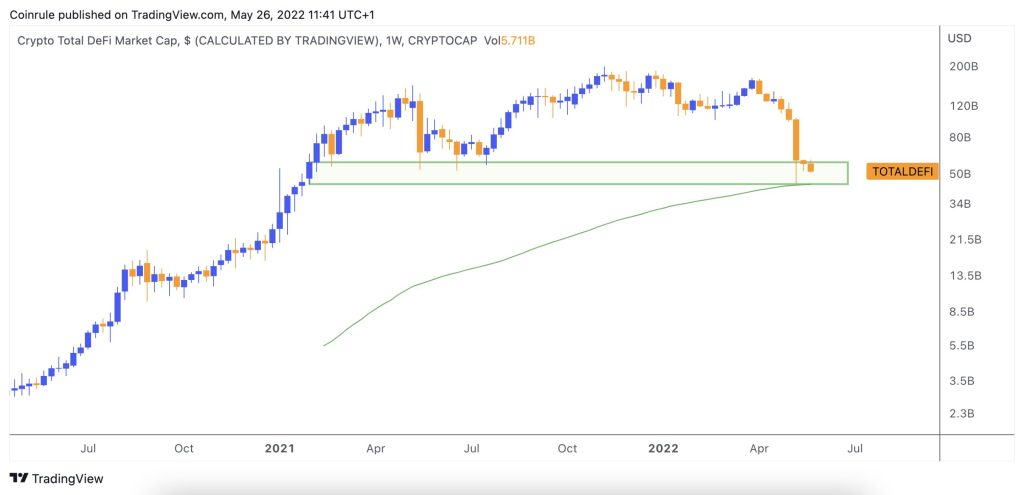
DeFi’s total value locked (TVL) was valued at $700 million at the start of 2020 and surged to $250 billion by the end of 2021. This week DeFi TVL sits at $110 billion, 56% down from all-time highs and at similar levels to July 2021. The nascent DeFi space has never experienced a full-on crypto winter and with declining yields on stablecoins and other assets, the spaces’ most active users are starting to question the sustainability of DeFi yields.
Yields within DeFi are derived from demand for leverage from traders and investors, along with activity on the protocols generating cash flows through fees. As the market has slowed down in recent months, trading volumes and the demand for leverage have fallen.
Even the riskiest of market participants are standing by and letting the dust settle, further impacting the activity on the protocols and the fees generated to subsidise the yields for lenders. The value of borrowers’ collateral has also dropped as asset prices have fallen. This has resulted in them having to utilize greater amounts of margin to unwind their levered positions to avoid another May 12th crash event.
Another component affecting the success of DeFi is trust in the protocols and the assets locked within them. UST’s implosion also led to DeFi liquidations breaking all-time highs in May with the demise of Anchor Protocol being the main contributor with $1.05 billion of the $1.12 billion total. It appears this has caused retail and larger institutional players to rethink their yield strategies and to re-evaluate the declining risk premia on stablecoins and yield generating platforms.
With the DeFi total market cap having retested the 200-week moving average and DeFi yields dwindling, will today’s DeFi protocols fail to survive their first crypto winter? Or are we simply entering a cool off period before a new round begins?